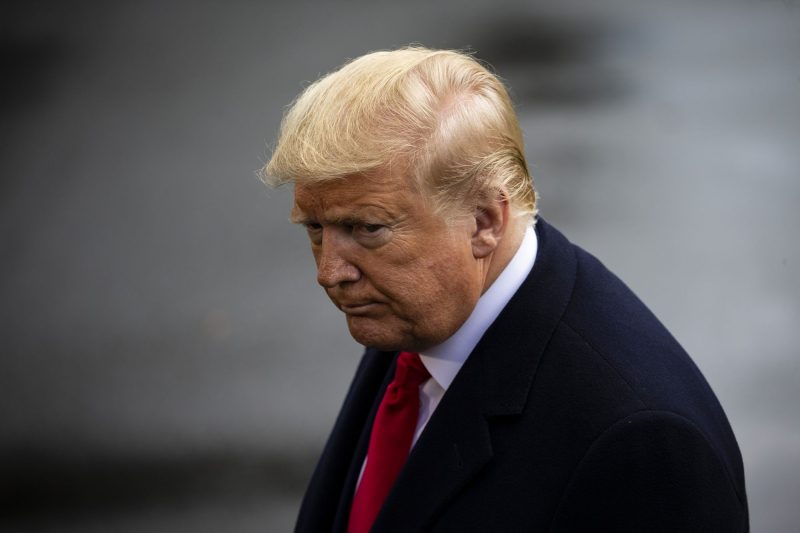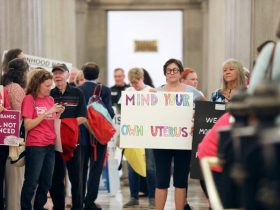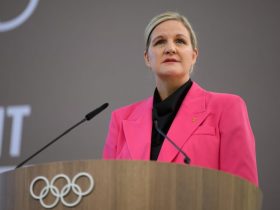Conspiratorial political rhetoric exists as though it is written on ancient Egyptian papyrus. Within controlled environments — the right temperature, the proper humidity — it can inspire and persuade indefinitely. But remove it from those protections, expose it to harsh light or less gentle handling, and it crumbles.
Donald Trump has helped to build one of the world’s largest repositories of false political rhetoric and misleading claims, assertions that exist within the capacious, controlled confines of right-wing news outlets and social media. And the centerpiece of his collection has long been his delicately structured rebuttal to Russia’s efforts to swing the 2016 presidential election on his behalf. He and his friends have taken bits of papyrus from various places and carefully assembled a document that they purport depicts the real history of the past seven years. They’re quite proud of it.
But then Trump went and took it out of its protective case and brought it to a courthouse. It crumbled — or, really, was picked apart, fiber by fiber. And, this week, U.S. District Judge Donald M. Middlebrooks levied a fine of nearly $1 million against Trump and his attorney, Alina Habba, for bringing it to him in the first place.
The argument Trump presented — detailed in an expansive lawsuit filed against Hillary Clinton, former government officials and others — is very on brand, given that it was a pastiche of the narrative that he and his allies were noodling over at the time it was submitted. This has long been Trump’s approach to this stuff: Elevate whatever hasn’t been debunked yet and the stuff that his supporters don’t care had already been debunked. But, again, that only works in a climate-controlled environment.
So when Trump and his attorneys tried to argue that Clinton had triggered the Russia investigation, they were largely leveraging the then-ongoing investigation by special counsel John Durham. That investigation was not a success, but Trump was stuck with it. In September, Middlebrooks made the deficiencies of this approach very obvious, littering the ground with papyrus.
Now, Middlebrooks has determined that the egregious deficiencies of the argument, the public presentations by Trump and his team that the argument was robust and — most importantly — Trump’s pattern of frivolous lawsuits that went unpunished should yield an actual penalty.
“A continuing pattern of misuse of the courts by Mr. Trump and his lawyers,” Middlebrooks wrote as he issued those sanctions, “undermines the rule of law, portrays judges as partisans, and diverts resources from those who have suffered actual legal harm.”
“Here, we are confronted with a lawsuit that should never have been filed, which was completely frivolous, both factually and legally, and which was brought in bad faith for an improper purpose,” he adds later. “Mr. Trump is a prolific and sophisticated litigant who is repeatedly using the courts to seek revenge on political adversaries. He is the mastermind of strategic abuse of the judicial process, and he cannot be seen as a litigant blindly following the advice of a lawyer. He knew full well the impact of his actions.”
Middlebrooks described the nature of the lawsuit — a “shotgun pleading” loosely aimed at a number of targets — as “amount[ing] to obstruction of justice.” He described having sifted “through the thread of allegations against each defendant only to find they added up to no cognizable claim. And the pleadings were drafted in a way to disguise that fact.” He noted that Trump and his attorneys “consistently misrepresented and cherry-picked portions of public reports and filings to support a false factual narrative” — something very familiar even to nonlegal observers.
In order to demonstrate the flimsiness of one of those threads of allegations, Middlebrooks walks through Trump’s claims about former FBI director James B. Comey, who, the initial lawsuit alleges, was somehow involved with Clinton in trying to get the Russia probe off the ground. Over the course of four pages, he presents the “case” against Comey, making its inconsistencies and superficialities obvious.
Even the amended version of Trump’s lawsuit, he writes, “is a hodgepodge of disconnected, often immaterial events, followed by an implausible conclusion. This is a deliberate attempt to harass; to tell a story without regard to facts.”
Each of Trump’s favorite allegations about the unfairness of the Russia probe is dispatched with Trump’s assessment that the conclusions of special counsel Robert S. Mueller III exonerated him, Middlebrooks wrote, is “perhaps acceptable as a cable news talking point,” but “neither an accurate nor fair reading of the Mueller Report.” A similar conclusion is reached for the dossier of allegations against Trump, for the Durham indictments (which failed to obtain guilty verdicts) and for Trump’s looping in his suspension from Twitter.
“The assertion that the Twitter ban was caused by misinformation by Ms. Clinton five years earlier is plainly false,” Middlebrooks writes, with understatement.
None of this alone would necessarily have led to Trump and Habba being sanctioned. But Middlebrooks noted that this suit was one of several with similar aims: bolstering Trump’s arguments, whipping up attention and spurring contributions. Lawsuits against CNN, against Twitter, against New York Attorney General Letitia James (D), even against the board that presents the Pulitzer Prize — in these, Middlebrooks saw the same pattern.
“[T]his widespread and persistent conduct points to the need for deterrence,” he concluded. And the form that deterrence would take was a penalty of $937,989.39 applied to both Trump and Habba.
Should have kept that theory in the protective case. Or, you know, not cobbled it together in the first place.








